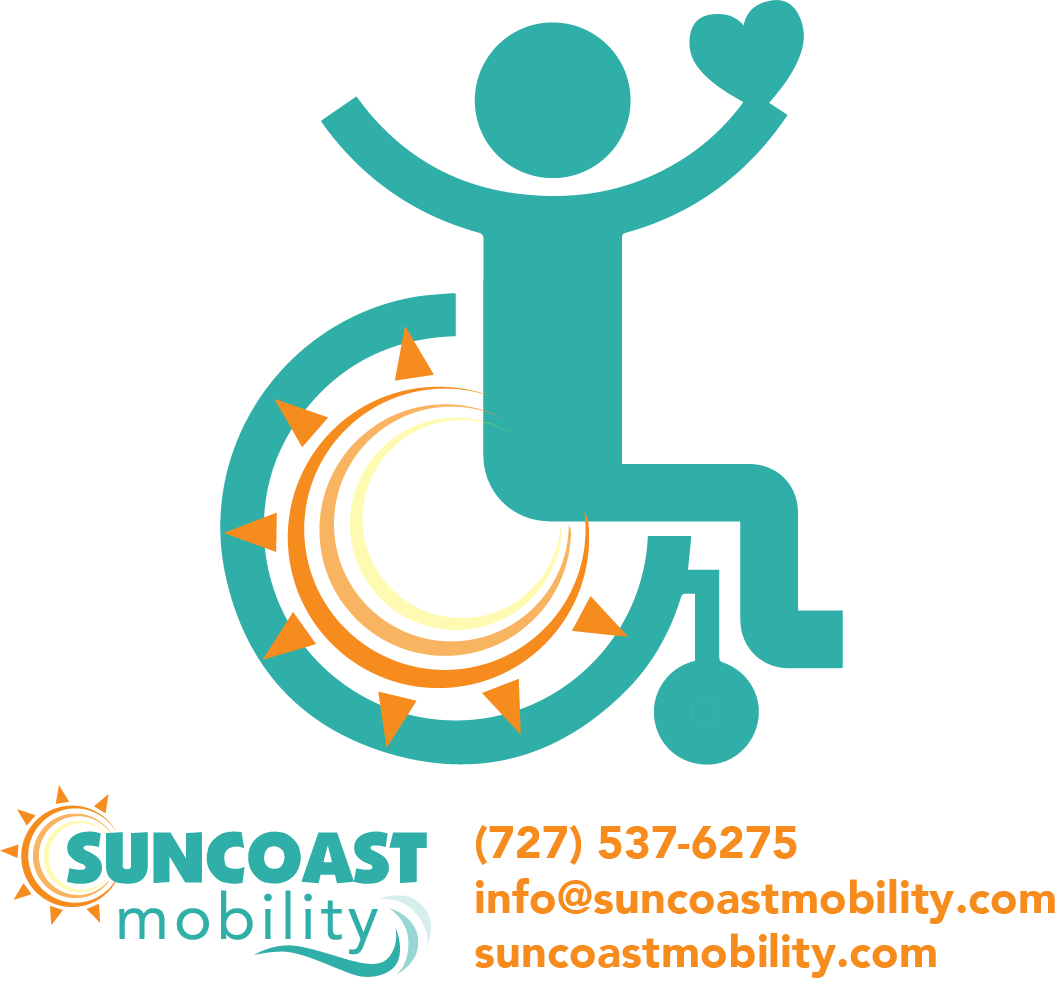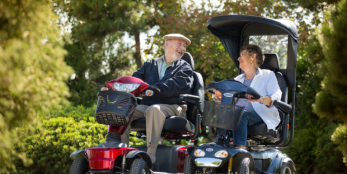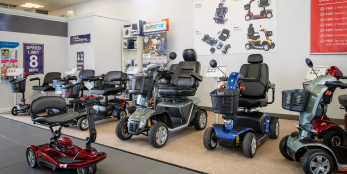Traveling with a Mobility Scooter: A Comprehensive Guide
If you rely on a mobility scooter for daily mobility, don’t let that discourage you from traveling. In fact, if your mobility scooter is FAA-approved, you can bring it along and use it at your destination. This article will provide you with essential tips and guidelines for flying with a mobility scooter, although these recommendations may also be applicable to other forms of travel. If you don’t currently own a mobility scooter, be sure to check out our top recommendations for FAA-approved scooters that are travel-friendly. Whether you're traveling for leisure or business, having the right tools, preparation, and knowledge can make all the difference in ensuring a smooth and enjoyable journey.
Travel Preparations: What You Need to Know
Before you embark on your journey, it’s crucial to gather and document key details about your mobility scooter. Airlines and transportation authorities will ask for specifics about your scooter, so it’s best to be prepared in advance. You should be able to provide the make, model, and, most importantly, the type of battery your scooter uses. Airlines will require this information to ensure compliance with safety regulations, especially those set by the FAA.
Battery Considerations and FAA Compliance
One of the most critical elements to consider is the battery type. FAA regulations dictate that the battery in your mobility scooter must meet certain safety standards. For instance, most mobility scooters use either lead-acid or lithium-ion batteries. Lithium-ion batteries are common, but they have specific regulations, especially regarding their watt-hour (Wh) rating. If the battery exceeds the allowed wattage, you may be required to ship it separately or use an alternative method of transport.
For this reason, it’s crucial to contact the airline you plan to travel with as early as possible—ideally, at least 72 hours before your flight. This will give you enough time to confirm that your mobility scooter and its battery are accepted for transport. During this call or email exchange, make sure to inquire about the airline's specific requirements and policies for flying with a mobility scooter. Different airlines may have their own set of guidelines, which could include additional paperwork, pre-boarding procedures, or guidelines on packing your scooter for travel.
It’s also important to remember that regulations can change, so always check for updates before you fly. The airline may also ask you to provide a letter from your doctor or mobility scooter provider stating that the scooter is medically necessary. Be sure to have all the documentation readily available to avoid any last-minute confusion.
Essentials to Pack for Your Trip
Traveling with a mobility scooter requires a bit more preparation than just packing a suitcase. The following are a few items and preparations you should consider before you head out:
Owner’s Manual and Technical Support Information: Bring along the owner’s manual for your mobility scooter. This document can be vital if you encounter any technical issues while traveling. Having a manual on hand will make it easier for airport staff or support personnel to assist you if necessary. You should also note the make and model of your scooter, as well as the contact information for service providers or technical support teams that could be useful during your travels.
Medical Necessity Letter: If your mobility scooter was prescribed to you, carrying a letter of medical necessity can be a great help when navigating airports. This letter will clarify that your scooter is essential for your mobility, which can sometimes make it easier to request assistance or secure priority boarding.
Scooter Photos: Taking clear photos of your mobility scooter before your trip is a smart precaution. These images can serve as proof in case your scooter is damaged or lost during the flight. Make sure to capture any unique identifiers or accessories that are attached to your scooter, as this can assist in identifying it if needed.
Charging and Backup Equipment: Your mobility scooter’s battery might not last throughout your entire trip. To avoid running into a situation where your scooter is out of power, always pack your charger and any spare parts you may need, including a backup battery if possible. This way, you can be sure that you’ll have access to a functional scooter throughout your travels.
Adapter and Converter for Charging: For international travel, one of the biggest concerns is ensuring that you’ll be able to charge your scooter at your destination. Different countries have different electrical standards, including a range of voltage levels and plug types. Some countries use 110V electricity, while others use 220V. You may need to purchase a plug adapter to fit the local outlet and a voltage converter to prevent damage to your scooter’s charger. Without these items, you could find yourself unable to power up your scooter while abroad.
Understanding Electrical Standards Abroad
If you’re traveling internationally, researching the electrical standards in the country you're visiting is essential. There are approximately 15 different types of electrical outlets worldwide, and the voltage can vary significantly between regions. Understanding the differences will help ensure that you can safely charge your scooter’s battery without risk of damage.
Voltage Differences: The most significant difference in electrical standards across countries is the voltage used. For example, in North America, most electrical systems operate on 110V, while in Europe, the standard is typically 220V to 240V. If your scooter charger is not compatible with the voltage of the country you’re visiting, you’ll need a voltage converter to adjust it. A converter ensures that the current supplied to your scooter’s charger is safe and won’t cause any damage.
Plug Adapters: Electrical outlets vary in design, and a plug adapter is essential to connect your scooter charger to local outlets. Some countries use round prongs, while others use flat ones. Make sure you bring the appropriate adapter to avoid any inconveniences during your trip.
It’s worth mentioning that not all mobility scooter chargers are dual voltage. Be sure to check your scooter’s charger specifications before you travel to ensure that it can handle the voltage of your destination. If in doubt, consult with the scooter manufacturer or retailer for advice on international travel.
Boarding the Plane with Your Mobility Scooter
When it comes time to board your flight, there are specific guidelines to follow to ensure that your mobility scooter is handled correctly. In the United States, airlines are required by the FAA to allow passengers with mobility devices to check their scooters free of charge. However, this does not mean the process is always seamless.
Checking In and Preparing Your Scooter for Travel
At the airport, you will likely be asked to check your mobility scooter at the gate. Some airports may have designated areas for scooter check-in, while others might require you to bring your scooter to the check-in counter first. Either way, it’s important to allow extra time for these procedures to avoid any rush or stress.
Most airlines will ask you to disassemble your scooter, if possible, before checking it in. You may need to remove the battery or fold up the seat, depending on your scooter’s design. Some mobility scooters are compact enough to be taken as carry-ons, but you will need to confirm this with your airline beforehand.
Airport Assistance
One of the most significant advantages of traveling with a mobility scooter is that you can request assistance at the airport. If you need help getting to your gate, you can arrange for an airport employee to escort you, sometimes using a wheelchair or electric cart for support. This is especially useful for navigating large and busy airports, where distances between terminals and gates can be substantial.
If your scooter is too bulky or heavy to bring all the way to the gate, many airports offer the option of having your scooter transported directly to the gate for you. This ensures that you won’t be left without mobility assistance once you arrive at the terminal.
Time Management and Communication with Airline Staff
Traveling with a mobility scooter requires good communication with airline staff and efficient time management. Be proactive about arriving early at the airport to ensure that all paperwork is in order and to avoid delays. Since the procedures for traveling with a scooter may take additional time, it’s crucial to allow for any extra steps in the process.
Airlines often recommend that passengers with mobility devices arrive 2 to 3 hours before their flight to ensure that everything is handled properly. Additionally, it’s helpful to ask airline staff about any special procedures once you’re at the gate, such as whether you will be allowed to board early or if you can stay in your scooter until the last moment before boarding.
Can I fly with my mobility scooter?
Yes, you can usually travel with a mobility scooter, but it's important to notify the airline at least 48 hours in advance and make sure the scooter's batteries meet FAA regulations.
Do airlines charge extra for mobility scooters?
Most airlines don't impose additional charges for bringing a mobility scooter on board, as they are considered assistive devices and are exempt from baggage limits. However, it's always wise to confirm with your airline beforehand to avoid any surprise fees.
How to check a mobility scooter on an airline?
To bring a mobility scooter on an airline, notify the airline ahead of time, check it in at the ticket counter or gate, and follow their guidelines for handling and tagging. You will likely receive wheelchair assistance and may have priority boarding.
Final Tips for Traveling with a Mobility Scooter
Traveling with a mobility scooter doesn’t have to be daunting, but it does require careful planning. Here are some final tips to ensure that your trip goes smoothly:
Stay Informed: Regularly check the policies of the airline you’re flying with, as rules can change. Different airlines may have different requirements for mobility devices, and it’s always a good idea to clarify any doubts beforehand.
Plan for the Unexpected: While most things may go smoothly, sometimes unexpected situations can arise. Always have a backup plan, whether it’s a contingency for charging your scooter or a plan for alternative transportation if there are issues with your mobility device.
Know Your Rights: As a passenger with a disability, you have rights under the Americans with Disabilities Act (ADA). Familiarize yourself with these rights to ensure you receive the accommodations you need.
Consider Travel Insurance: If you’re traveling internationally or flying a long distance, it may be worthwhile to invest in travel insurance that covers lost or damaged mobility equipment.
By taking the right steps to prepare, you can ensure that your mobility scooter doesn’t hinder your ability to explore new places and enjoy your journey. With proper planning, the world becomes accessible to everyone, regardless of mobility challenges.








